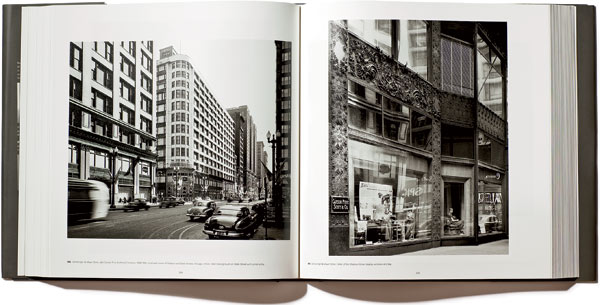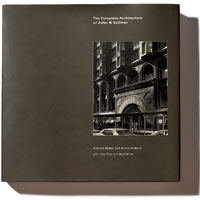
In a letter dated November 19, 1959, the ardent preservationist Richard Nickel explained to his New York–based publisher why he had so blatantly whiffed his deadline. Nickel had been documenting the architecture of Dankmar Adler and Louis Sullivan—a book project thrust upon him by his influential teacher Aaron Siskind. The photography, some by Nickel, some by Siskind and his Institute of Design students, was coming along. But the herculean amount of research—and Nickel’s perfectionism—got in the way. “The writing became a real obstacle,” he typed in the letter. “The library work became complex and more and more I felt greater responsibility for the completeness, accuracy, and perfection . . . then there was the matter of understanding. How was I to write about Sullivan with only a meagerly art history and architecture training and no writing experience?” The word “understanding” was underlined in frustration.
 The proposed book was a labor of love—but the project didn’t pay the bills, nor did it guard against the wrecking balls that threatened the very structures Nickel was trying to record. Thirteen years later, after he tragically died while salvaging ornament in the Chicago Stock Exchange, his friend and occasional employer, the architect John Vinci, hauled notes and 10,000 negatives from the basement of the Nickel family home. But, in time, the historians hired to complete the book became bogged down, too. Meanwhile, more examples of the pair’s brilliance were being reduced to rubble. “It was a series of tragedies—from the breakup of the partnership of Adler & Sullivan, to Sullivan’s own tragic life, to the loss of the buildings, to Nickel’s own life lost within,” says Ward Miller, an architect to whom the task of completing the project was handed in 2003. “It was haunting.”
The proposed book was a labor of love—but the project didn’t pay the bills, nor did it guard against the wrecking balls that threatened the very structures Nickel was trying to record. Thirteen years later, after he tragically died while salvaging ornament in the Chicago Stock Exchange, his friend and occasional employer, the architect John Vinci, hauled notes and 10,000 negatives from the basement of the Nickel family home. But, in time, the historians hired to complete the book became bogged down, too. Meanwhile, more examples of the pair’s brilliance were being reduced to rubble. “It was a series of tragedies—from the breakup of the partnership of Adler & Sullivan, to Sullivan’s own tragic life, to the loss of the buildings, to Nickel’s own life lost within,” says Ward Miller, an architect to whom the task of completing the project was handed in 2003. “It was haunting.”
Now, at last, a happy ending: The Complete Architecture of Adler & Sullivan (Richard Nickel Committee, $95), an eight-pound volume that features 815 photos and catalogs all the 256 known Adler and Sullivan commissions. Remarkably, the only existing color pictures of the Gage & Company Store, the Hammond Library, and others appear here—one benefit of the 50-year delay was that recent technology allowed faded negatives to be patched. The first name on the book is Nickel’s, naturally. But the effort likely would have fizzled without Vinci, who invested 38 years and his own savings in it. “I’m 73—I can’t take it with me,” he says prosaically. Vinci and Miller discuss the project on February 2nd at the Chicago Architecture Foundation. For info, visit explorechicago.org.
Photography: Anna Knott


